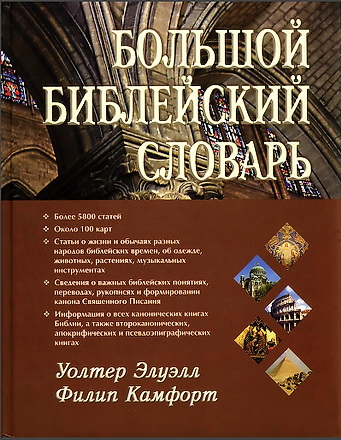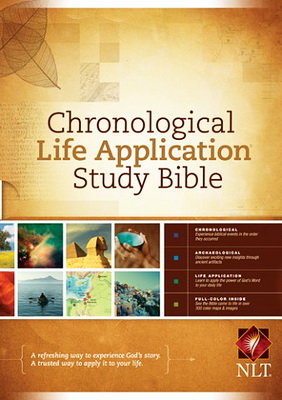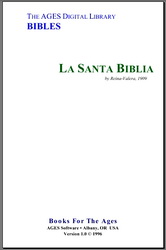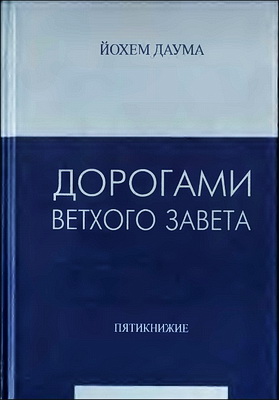
Chronological Life Application Study Bible (NLT)

Качественные электронные версии переводов Библии на русском и на английском языках
Chronological Life Application Study Bible - NLT
Author: Tyndale publishers
Release Date: 2012
ISBN:978-1-4143-3927-6
The Bible is the story of God’s interaction with his creation. It is a story that occurs over time, in many places, and through many events. It includes the lives and lessons learned by many people from many cultures. It’s often easy to lose sight of the way in which God’s story fits together when our primary way of looking at the Bible is a bit here and a bit there.
Chronological Life Application Study Bible - NLT - WHAT IS NEW LIVING TRANSLATION?
English Bible translations tend to be governed by one of two general translation theories. The first theory has been called “formal-equivalence,” “literal,” or “word-for-word” translation. According to this theory, the translator attempts to render each word of the original language into English and seeks to preserve the original syntax and sentence structure as much as possible in translation. The second theory has been called “dynamic-equivalence,” “functional-equivalence,” or “thought-for-thought” translation. The goal of this translation theory is to produce in English the closest natural equivalent of the message expressed by the original-language text, both in meaning and in style.
The pure application of either of these translation philosophies would create translations at opposite ends of the translation spectrum. But in reality, all translations contain a mixture of these two philosophies. A purely formal-equivalence translation would be unintelligible in English, and a purely dynamic-equivalence translation would risk being unfaithful to the original. That is why translations shaped by dynamic-equivalence theory are usually quite literal when the original text is relatively clear, and the translations shaped by formal-equivalence theory are sometimes quite dynamic when the original text is obscure.
The translators of the New Living Translation set out to render the message of the original texts of Scripture into clear, contemporary English. As they did so, they kept the concerns of both formal-equivalence and dynamic-equivalence in mind. On the one hand, they translated as simply and literally as possible when that approach yielded an accurate, clear, and natural English text. Many words and phrases were rendered literally and consistently into English, preserving essential literary and rhetorical devices, ancient metaphors, and word choices that give structure to the text and provide echoes of meaning from one passage to the next.
On the other hand, the translators rendered the message more dynamically when the literal rendering was hard to understand, was misleading, or yielded archaic or foreign wording. They clarified difficult metaphors and terms to aid in the reader’s understanding. The translators first struggled with the meaning of the words and phrases in the ancient context; then they rendered the message into clear, natural English. Their goal was to be both faithful to the ancient texts and eminently readable. The result is a translation that is both exegetically accurate and idiomatically powerful.
Chronological Life Application Study Bible - NLT - WHAT IS APPLICATION?
The best way to define application is to first determine what it is not. Application is not just accumulating knowledge. Knowledge helps us discover and understand facts and concepts, but it stops there. History is filled with philosophers who knew what the Bible said but failed to apply it to their lives, keeping them from believing and changing. Many think that understanding is the end goal of Bible study, but it is really only the beginning.
Application is not just illustration. Illustration only tells us how someone else handled a similar situation. While we may empathize with that person, we still have little direction for our personal situation.
Application is not just making a passage “relevant.” Making the Bible relevant only helps us to see that the same lessons that were true in Bible times are true today; it does not show us how to apply them to the problems and pressures of our individual lives.
What, then, is application? Application begins by knowing and understanding God’s Word and goes further. It focuses on the truth of the particular Scripture text, shows us what to do about what we’re reading, and motivates us to respond to what God is teaching. All three are essential.
Application is putting into practice what we already know (see Mark 4:24; Heb 5:14). It answers our question “So what?” by confronting us with the right questions and motivating us to take action (see 1 Jn 2:5-6; Jas 2:17). Application is unique for each individual. It is making a relevant truth a personal truth, and it involves developing a strategy and action plan to live our lives in harmony with the Bible. It is the biblical “how to” of life.
Chronological Life Application Study Bible - NLT - WHAT IS UNIQUE ABOUT A CHRONOLOGICAL BIBLE?
The Bible does not proceed in chronological order from beginning to end. Indeed, the 66 books of the Bible do tell a unified story that begins at Genesis 1:1 and ends at Revelation 22:21, but the books are essentially organized by grouping similar kinds of books together (prophets, letters, etc.) rather than proceeding in chronological order. Some books cover the exact same events from different perspectives, like the books of Kings and Chronicles. Others, like the Psalms, are spread over hundreds of years by many different authors. It is often difficult for ordinary readers to put together the little clues throughout the Bible that show how a particular book or chapter fits into the larger story of the Bible. But seeing that larger story is often the key that unlocks understanding for some parts of the Bible that seem obscure.
The Chronological Life Application Study Bible helps the reader see the larger story by breaking up the traditional books of the Bible into 10 major eras of biblical history, intermingling the Scriptures into a single, unified story from Creation to the end. This provides readers with a unique viewpoint on the biblical story, and it can give fresh and exciting insight into books of the Bible that might have been difficult to understand apart from knowing where they fall chronologically. For example, see the way the prophets Haggai and Zechariah are interacting with what is happening in the book of Ezra. Intermingling the prophets with the historical books can give us a new perspective on the issues they were dealing with. In this case, it shows how the people responded to God’s call on their life through the prophets: The Temple was rebuilt and proper worship in Jerusalem was restored! This is only one of many examples. In the Chronological Life Application Study Bible, you will notice that the prophets are an integral part of the story of Israel, and their writings will pop up right in the middle of the story when they confronted a king or the people. You will read Paul’s letters to the Thessalonians right when he wrote them, during a stay in Corinth a few months after his visit to Thessalonica. This new view on the text of Scripture will give you surprising and valuable insights.




Комментарии (1 комментарий)
Дякую за Файл!